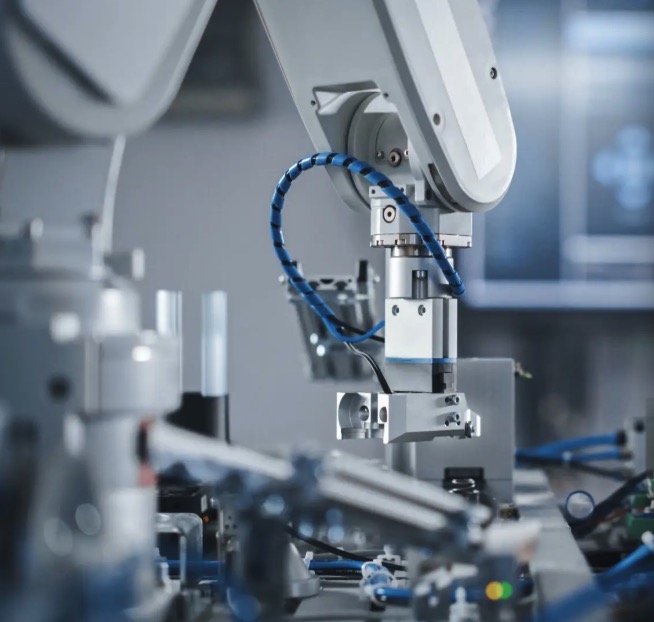The electronic component industry is rapidly transforming, fueled by automation, miniaturization, and growing sustainability needs. As sectors increasingly depend on smart technologies and IoT, component manufacturers are innovating to keep pace. This article explores the primary industry trends, market insights, and technical advancements shaping the future of electronic components.
1. Industry-Wide Transformation Trends
Rise of Automation and Smart Technologies
Automation and AI are reshaping production processes within the electronic components industry. By automating manufacturing, companies can increase production speed, reduce errors, and maintain cost-effectiveness. Key sectors like consumer electronics, automotive, and industrial machinery are heavily investing in automated assembly lines to meet market demands for precision and efficiency.
Demand for Sustainable Solutions
Sustainability has become a crucial focus, with companies developing eco-friendly materials and energy-efficient production practices. Some manufacturers are now prioritizing recyclability in product design, utilizing sustainable materials like bioplastics, and opting for energy-efficient production methods to reduce their environmental footprint. This shift aligns with the growing emphasis on green policies worldwide, helping businesses meet stricter environmental regulations and attract eco-conscious clients.
Continuous Miniaturization of Components
The miniaturization trend allows manufacturers to create more compact, portable devices without sacrificing functionality. Techniques like System-in-Package (SiP) and 3D packaging enable manufacturers to pack more functionality into smaller spaces, essential for wearables, smartphones, and other compact gadgets. This miniaturization also facilitates lightweight designs, which improve energy efficiency and device portability.
2. Global Market Overview and Growth Forecast
The electronic component market reached around $490 billion in 2023 and is set to grow at a compound annual growth rate (CAGR) of 5.5% through 2028. This growth is largely attributed to demand across key sectors, including:
- Consumer Electronics: The rise of connected devices, from smartphones to smart home gadgets, drives demand for smaller, more powerful components.
- Automotive Industry: With the increasing popularity of electric vehicles (EVs) and advanced driver-assistance systems (ADAS), automotive manufacturers are one of the top consumers of electronic components.
- Industrial Applications: IoT and industrial automation are also fueling demand for sophisticated electronic components in manufacturing processes.
Geographically, the Asia-Pacific region leads the market, thanks to strong manufacturing capabilities in countries like China, Japan, and South Korea. North America and Europe are also significant players, emphasizing innovation and technology-driven solutions.
3. Key Market Segments
The electronic component market comprises various segments, each contributing uniquely to the industry landscape:
- Passive Components: Capacitors, resistors, and inductors form the backbone of most electronic circuits. Demand is high across consumer electronics and automotive sectors.
- Active Components: Semiconductors and integrated circuits continue to be central to the industry, with high demand in computing, telecommunications, and automotive applications.
- Electromechanical Components: Connectors, relays, and switches are essential in both traditional and emerging electronics sectors, including automotive and industrial machinery.
Despite promising growth, the industry faces ongoing challenges like supply chain disruptions and semiconductor shortages. Companies are addressing these by diversifying suppliers and investing in sustainable practices to secure a stable supply chain and reduce dependencies.
4. Cutting-Edge Advancements in Component Technology
Semiconductor Innovation
Advancements in semiconductor technology are crucial for delivering faster, more energy-efficient chips. Key developments include:
- FinFET Transistors: These transistors enhance performance by improving current control at smaller scales, an essential feature for modern high-speed devices.
- Gallium Nitride (GaN) and Silicon Carbide (SiC): These materials allow electronic devices to handle higher voltages and temperatures, improving energy efficiency for power applications. GaN and SiC are particularly transformative in electric vehicle (EV) powertrains and telecommunications equipment, where energy efficiency is paramount.
Enhanced Capabilities in Passive Components
Technological improvements have led to smaller yet more powerful passive components, such as high-capacitance capacitors and thin-film resistors. These components contribute to lighter, more compact electronic systems, which are essential for consumer electronics and portable industrial tools.
Miniaturization: Shrinking Technology with High Performance
Miniaturization remains a key priority as manufacturers strive to reduce device sizes while enhancing performance. Techniques like System-in-Package (SiP) and 3D packaging support the integration of multiple functionalities into a single chip. These advancements not only reduce space but also allow for faster data processing and improved thermal management, critical for high-performance applications in smartphones and industrial equipment.
5. Future Directions: What’s Next?
Increased Focus on Custom Solutions
With industries like healthcare, aerospace, and automotive requiring highly specialized components, the future of the electronic components industry lies in tailored, niche solutions. Companies that offer customized, application-specific components will likely experience competitive advantages as market demands evolve.
Emphasis on AI Integration
AI is expected to play a larger role, not only in manufacturing but also in the functioning of components themselves. AI-driven chips and adaptive systems are in demand for applications ranging from autonomous vehicles to smart home devices. The development of AI-compatible components will be instrumental in the next phase of industry growth.
New Standards for Sustainability and Efficiency
As the industry becomes more eco-conscious, sustainable practices will be central to its long-term growth. This trend goes beyond materials, encompassing energy-efficient manufacturing processes and product lifecycle management to ensure recyclability and reduce waste. These practices align with global regulatory pressures, particularly in regions like the EU, which is leading the way in electronic waste reduction.
Key Takeaways
The electronic component industry is on a dynamic path, with automation, miniaturization, and sustainability paving the way forward. As companies navigate supply chain challenges and aim for energy-efficient solutions, the focus on innovation, particularly in semiconductors and AI integration, will remain paramount. For stakeholders, understanding these trends is essential to stay competitive in this evolving market landscape.




